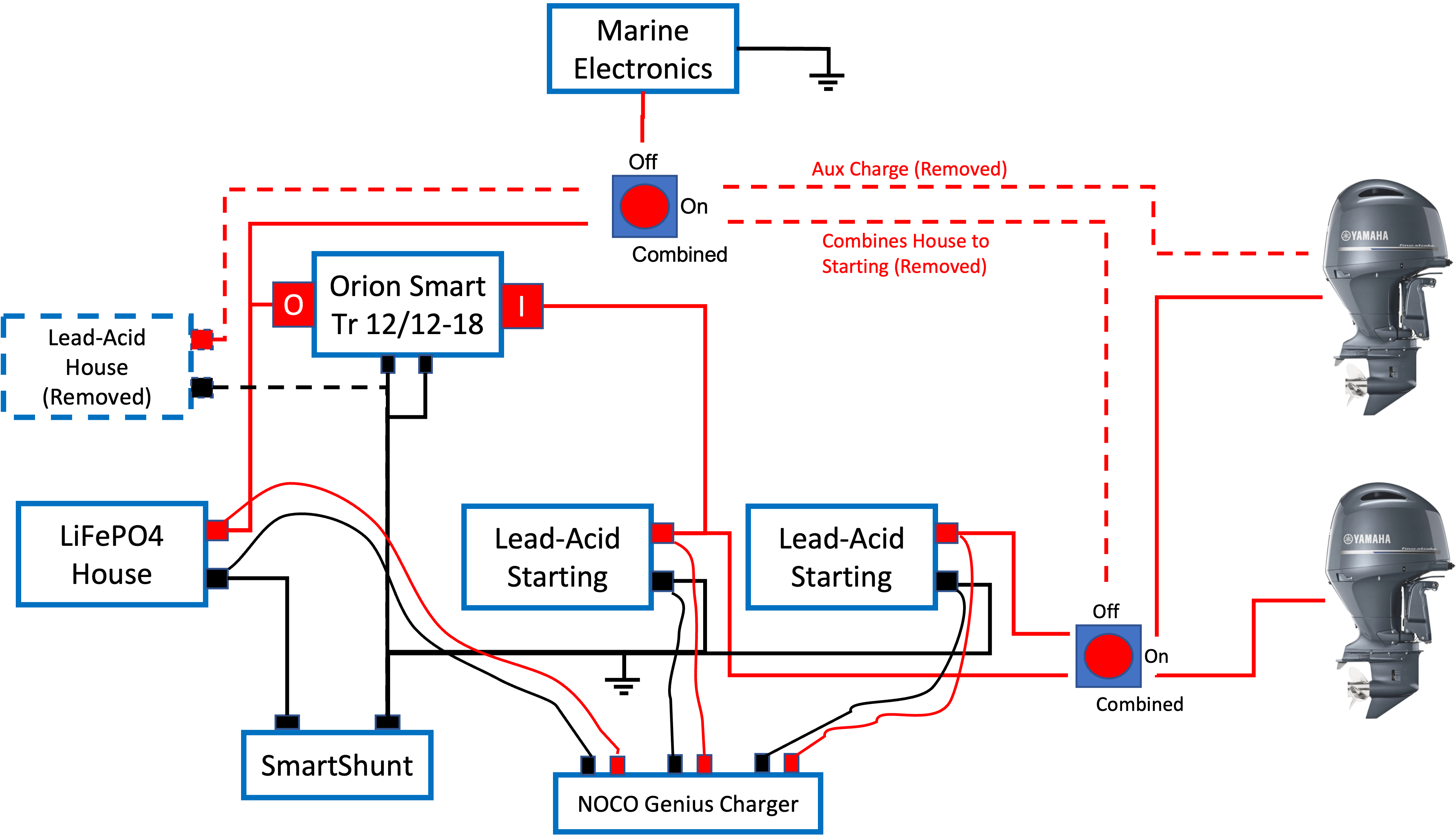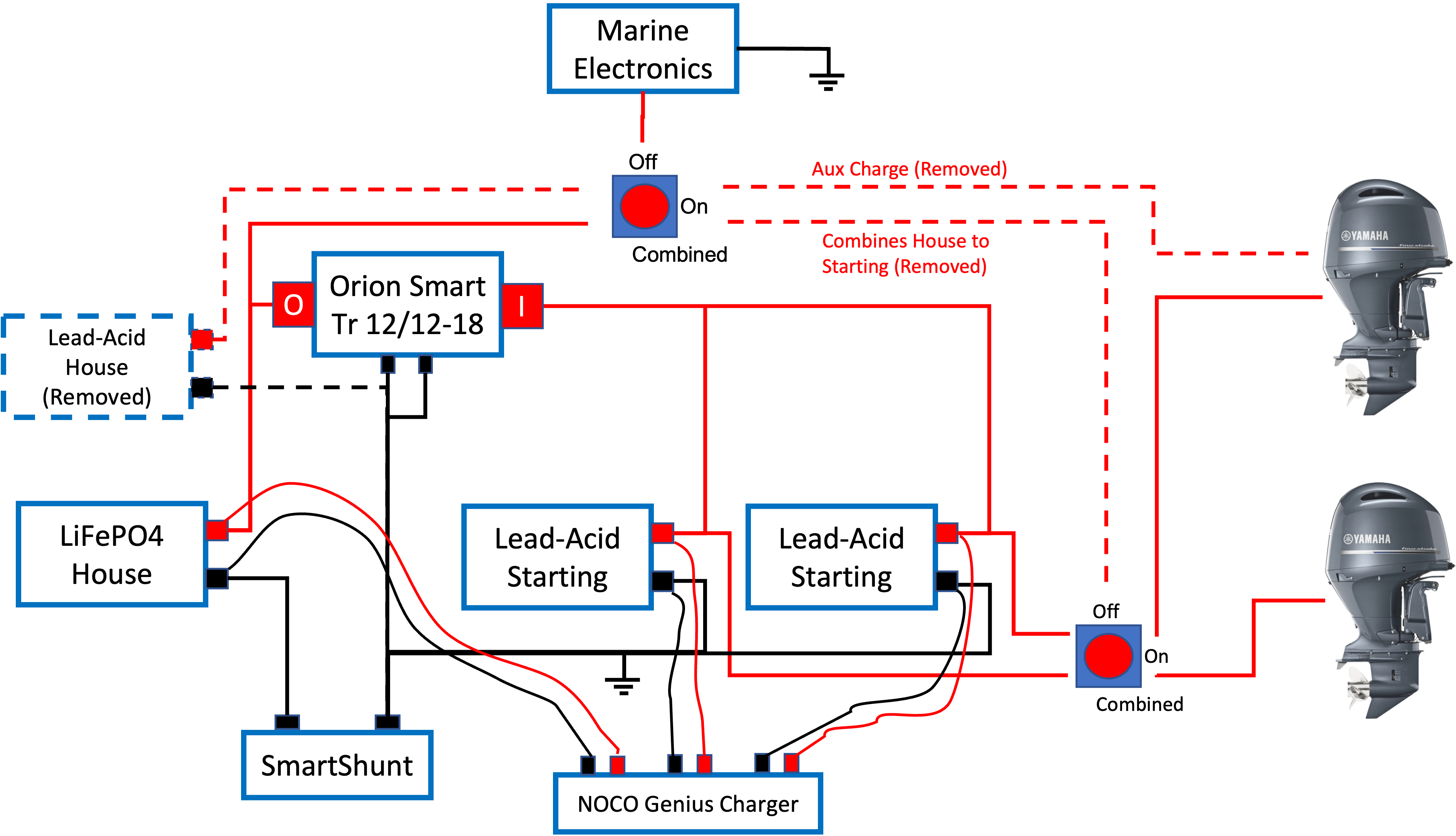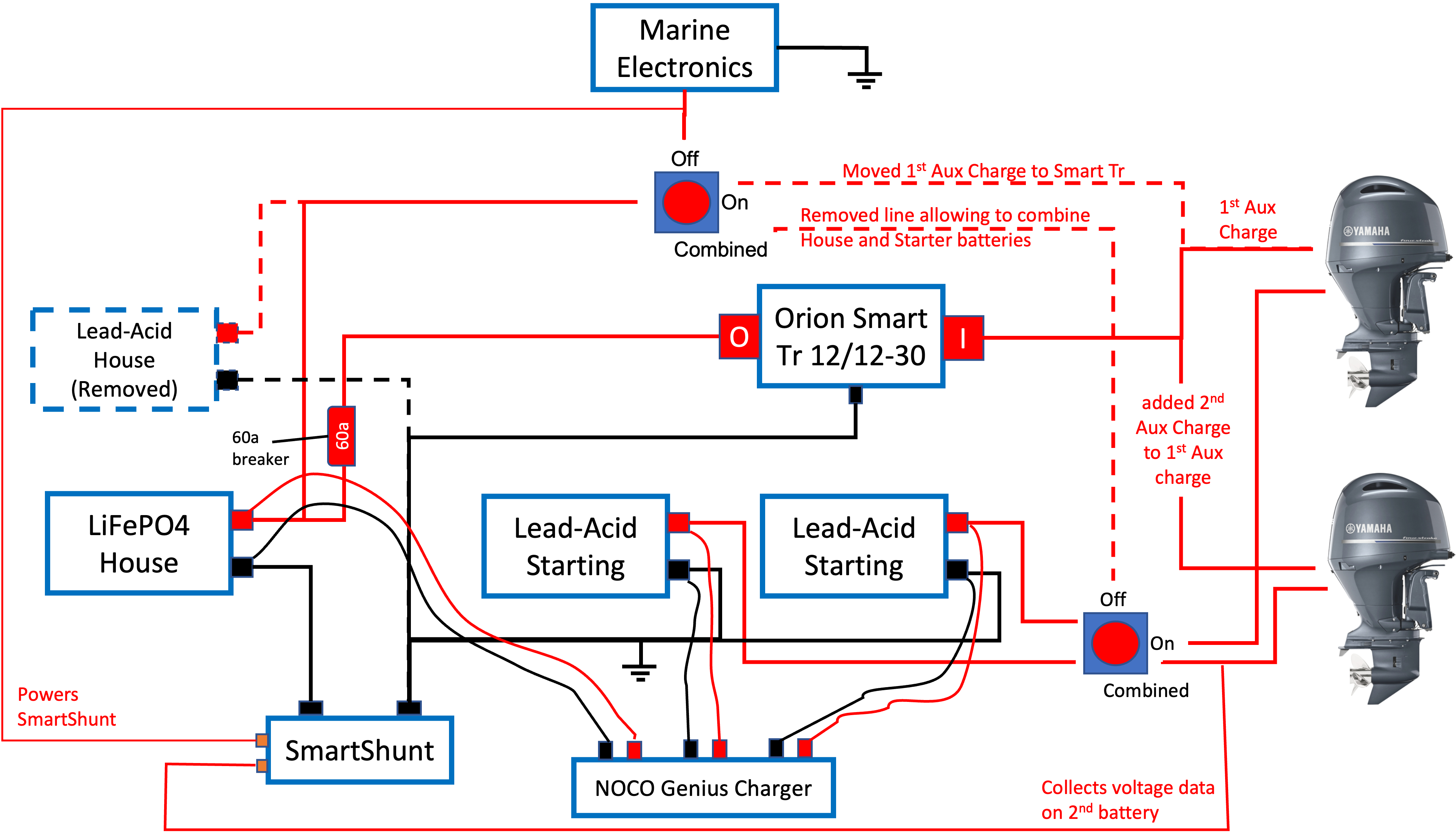Similar to a few other posts, I want to add an Orion Smart Tr to my boat for running a LiFePO4 house battery in parallel with a Lead Acid starting battery. The LiFePO4 is replacing a Lead Acid that has a common ground with the two other starting batteries. My engines are Yamaha F200s that have charging systems with 50 amp max output. Through other research I've read recommendations to conservatively subtract 10 amps for engine needs (40 amps left), subtract 25% of my paralleled lead acid battery capacity for its amp draw (25% of 80 amp-hours is 20 amps). End result - 20 amps left for DC-DC charger and LiFePO4.
1. So it seems like getting the 12/12-30 would result in too much potential current draw on the Yamahas charging system, and I should purchase the 12/12-18 instead (and with little margin). Does this make sense?
2. Currently the lead acid house battery is charged through the aux connection of one of the Yamaha charging systems. Since the house will now be paralleled off the starter battery, I would connect this aux line to the same battery switch port as the the main connection from the same battery (similar to when the switch is currently in combined mode). Don't think this would help or hurt, just didn't want to leave it floating. Make sense?
3. Since there is only a 12/12-18 "isolated" model, I would do what others have done and share a common ground with both sides of the DC-DC charger. Also wondering if this is going to eliminate my desire to use a SmartShunt to capture current draw, etc of the LiFePO4 (a secondary concern). Thoughts?
I also have installed a NOCO Genius 3-Bank battery charger that has a configurable lithium profile I will occasionally use, but liked the configurability of the Smart Tr to be able to selectively turn on when I'm out in the water once the Lithium is down to a lower SoC, limiting the number of recharges. Seems like this will prolong battery life.
Thanks in advance.



